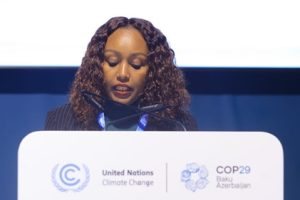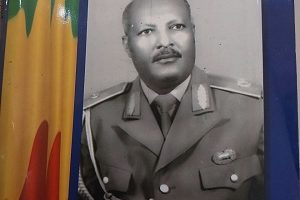Unlike what had been practiced in the past along the River Nile, this time the tone of the deal has changed into pursuit of promoting “transboundary cooperation and regional integration through the generation of sustainable and reliable clean energy supply”. This is a clear stipulation in the Declaration of Principles (DoP) on the Grand Ethiopian Renaissance Dam (GERD) project signed among Ethiopia, Sudan and Egypt on 23 March 2015 in Khartoum. Despite an ongoing attempt to transform the project from a source of tension to a basis for regional cooperation, an avenue for a new strategic partnership is still seems to be a distantly hinged lamp.
More than half a century ago for Egypt to plan and finance a mega project on Nile was as simple as striking a gamble between its allies. In the 1950s, Egyptian leader Gamal Abdel Nasser envisioned building a new dam across the Nile, one large enough to end flooding and bring electric power to every corner of Egypt. He won United States and British financial backing, but in 1956 both nations canceled the offer after learning of a secret Egyptian arms agreement with the Soviet Union. In response Nasser nationalized the British and French-owned Suez Canal, intending to use tolls to pay for the Aswan High Dam (AHD) project. Soviet loans and proceeds from Suez Canal tolls allowed Nasser to begin work on the AHD in 1960.
It’s obvious that such an immensely significant project could come along with contention of its own and the better the bidder to the vision at end shall win. No matter tough the course could be, Nasser managed to take the project many steps ahead and on July 21, 1970, the ambitious project was completed. The delivery of this dam brought the Nile’s devastating floods to an end, reclaimed more than 100 thousand acres of desert land for cultivation, and made additional crops possible on some 800 thousand other acres. The dam also produce as much as 10 billion kwh annually, providing a tremendous boost to Egyptian economy and introducing 20th century life into many villages. Here is where history can repeats itself for Ethiopia too.
Unfortunately, Ethiopia has not been in a position to bargain on certain tolls to gear-up for the quick completion of the GERD as a mega-project of the century on Abbay River so as to insert the claim of history repeating itself. From the outset Ethiopia went on with the project without any external financial support, and has progressed steadily using money from contributions, donations and government bonds.
The GERD, now completed over 74 per cent of the construction, has already hit its first year filling target with the contribution of current rainy season precipitation. This is a start to a much greater ambition Ethiopia wants to achieve using Abbay for years to come. This year’s filling should not be much of a big deal for downstream countries other than fear of losing ground in the face of a longstanding strong hands of politics and history. Ethiopia was saying this initial water impoundment will be only less than 10 per cent of the total flow of the river, insuring that it would never cause a significant harm to downstream countries. Next year it is expected that a total of 18 billion cubic meters of water will be impounded in the reservoir followed by early power generation.
Recently, an expert group united under the ‘Ethiopian Diaspora and Local Experts Task Force’ has forwarded a preliminary cost estimate of delaying the GERD suggesting that a delay in filling the GERD results in the loss of significant revenues from electricity export among other economic and social impacts. The group’s preliminary economic analysis has yielded an estimate of 41.7 billion dollar cost associated with delaying the GERD by five years. According to these experts, the first phase cost estimates of delaying the GERD indicate that, assuming that the project could start full operation by 2024, the Ethiopian economy would gain in real terms about 7.5 billion dollar per year if the GERD starts operation at full capacity within four years. It is also estimated that if the filling of the reservoir is delayed and filled within seven years, the Ethiopian economy would have a cumulative real opportunity cost of 28.7 billion dollar over a span of the next three years. Furthermore they argue, extending the filling period to nine years would involve an economic opportunity cost of 41.7 billion dollar during the five years delay from the technically feasible full capacity operation year.
According to the experts, the scope of the cost estimate is limited and does not capture the full cost of the delay of the filling process suggesting only partial assessment. As to the group, had the study included the environmental damage associated with using firewood, the full potential of electricity in spurring irrigation pumps and agricultural production, aiding the development of productive power and stimulating technological advances in services, including digital financial services for financial sector development, as well as the opportunity costs of lost revenues from tourism and fishery that large dams often generate, this cost estimate would have been much higher.
Despite fears of drought, Ethiopia asserts that the GERD can benefit the downstream countries by removing silt and sedimentation, by regulating the water flow and by conserving water in its highlands. Henceforth, Ethiopia’s initial move of managing the water flow at the GERD can be considered as a sip of courtesy for the downstream countries, particularly given the “positive gains and spillovers that Sudan and Egypt stand to rip from the GERD,” as indicated by experts. Although there foregone opportunity of economic activity, economic growth, and overall welfare for the region due to lack of genuine cooperation the time has come for the riparian countries to cast a purposeful cooperation within the region that eventually overcome a zero-sum-game for once and for all.
The Ethiopian Herald July 28, 2020
BY KIRAM TADESSE





